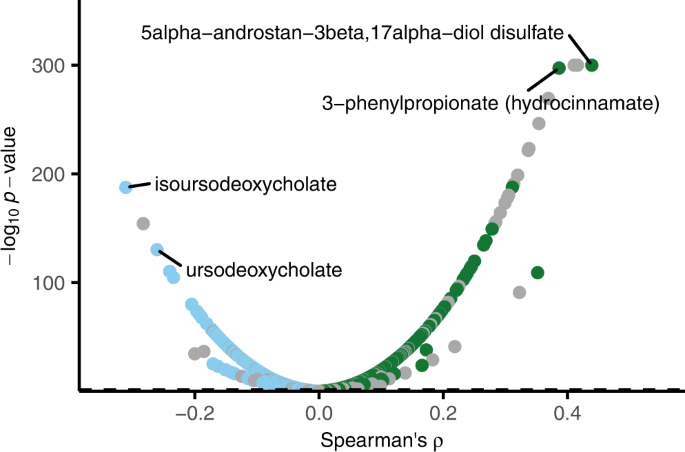An online atlas of human plasma metabolite signatures of gut microbiome composition
Published in Microbiology
Gut microbiota, the bacteria, fungi, viruses and other microorganisms in the gastrointestinal system, have an effect on the immune system and metabolism of their host. However, a large part of these gut microbiota is currently undescribed and their function is unknown. When we started this study, one of the described functions in humans was the conversion of dietary components into trimethylamine by bacteria in the gut. This metabolite is modified by the liver into trimethylamine-N-oxide (TMAO), which ends up in the blood where it potentially increases the chance of developing heart disease. We wondered whether there were more examples like TMAO, and we therefore set out to map all the associations between gut microbiota and metabolites in blood as a first step to find them.
Through the generous support from the Swedish Heart-Lung Foundation along with Knut and Alice Wallenberg Foundation, Vinnova and the Swedish Research Council, the Swedish CArdioPulmonary bioImage Study (SCAPIS) represents a world-unique collaborative effort between six Swedish universities, including Uppsala University and Lund University, and their respective university hospitals. SCAPIS recruited a total of 30,154 men and women in Sweden, from 50 to 64 years old, who underwent detailed imaging and functional analyses of the cardiovascular and pulmonary systems. A valuable part of SCAPIS was the opportunities for local researchers to add on measurements and sampling according to their interests. In Uppsala and Malmö, researchers set out to analyze fecal microbiota and the plasma metabolomics with state-of-the art methods. In all, 8,583 participants had both such measurements.
Microbiome epidemiology is still a rather young and developing field. This meant that we needed to perform extensive simulations to determine which statistical methods to use for the association analysis. Here, we also had very good input from the Reviewers. In all, we observed 546,819 significant associations between single microbial species and plasma metabolites after adjusting for multiple comparisons. This was a lot more than the 254 associations previously reported in a similar, but smaller, study performed by TwinsUK researchers. It should be noted that since the microbial species are analyzed on a relative scale, a proportion of the findings could be driven by the concomitant increases and decreases of other species when a causal association is present for a certain species. We refer to this as a problem of compositionality. We also assessed whether the observed associations were driven by potential confounders, such as health and lifestyle factors, body mass index (BMI), smoking behavior and medication use, but this was not the case. The large number of identified associations presented us with an interesting challenge, since describing all of these findings in detail seemed impossible. We therefore decided to report all findings in a companion atlas online (https://gutsyatlas.serve.scilifelab.se), where anyone interested in specific gut microbiota can find the associations with plasma metabolites or vice versa. These results can be visualized and downloaded as tables or figures.
.png)
If we query the plasma metabolite TMAO in the atlas and visualize its top findings for example, we can see that it is positively associated with many Eubacteriales species and several Oscillospiraceae species. We can also see that TMAO is similar to several of its dietary precursors such as choline and carnitine derivatives in its associations with gut microbiota. These findings, while not completely novel, provide us with clues to additional species involved in the TMAO conversion process.
We describe some of our additional findings in the paper, including interesting associations for uremic toxins, and the rest is ready to be explored using the companion atlas. We hope the atlas will be extensively used by the community, while we focus on potential repercussions on human health.
Follow the Topic
-
Nature Communications

An open access, multidisciplinary journal dedicated to publishing high-quality research in all areas of the biological, health, physical, chemical and Earth sciences.
Related Collections
With Collections, you can get published faster and increase your visibility.
Women's Health
Publishing Model: Hybrid
Deadline: Ongoing
Advances in neurodegenerative diseases
Publishing Model: Hybrid
Deadline: Dec 24, 2025


Please sign in or register for FREE
If you are a registered user on Research Communities by Springer Nature, please sign in